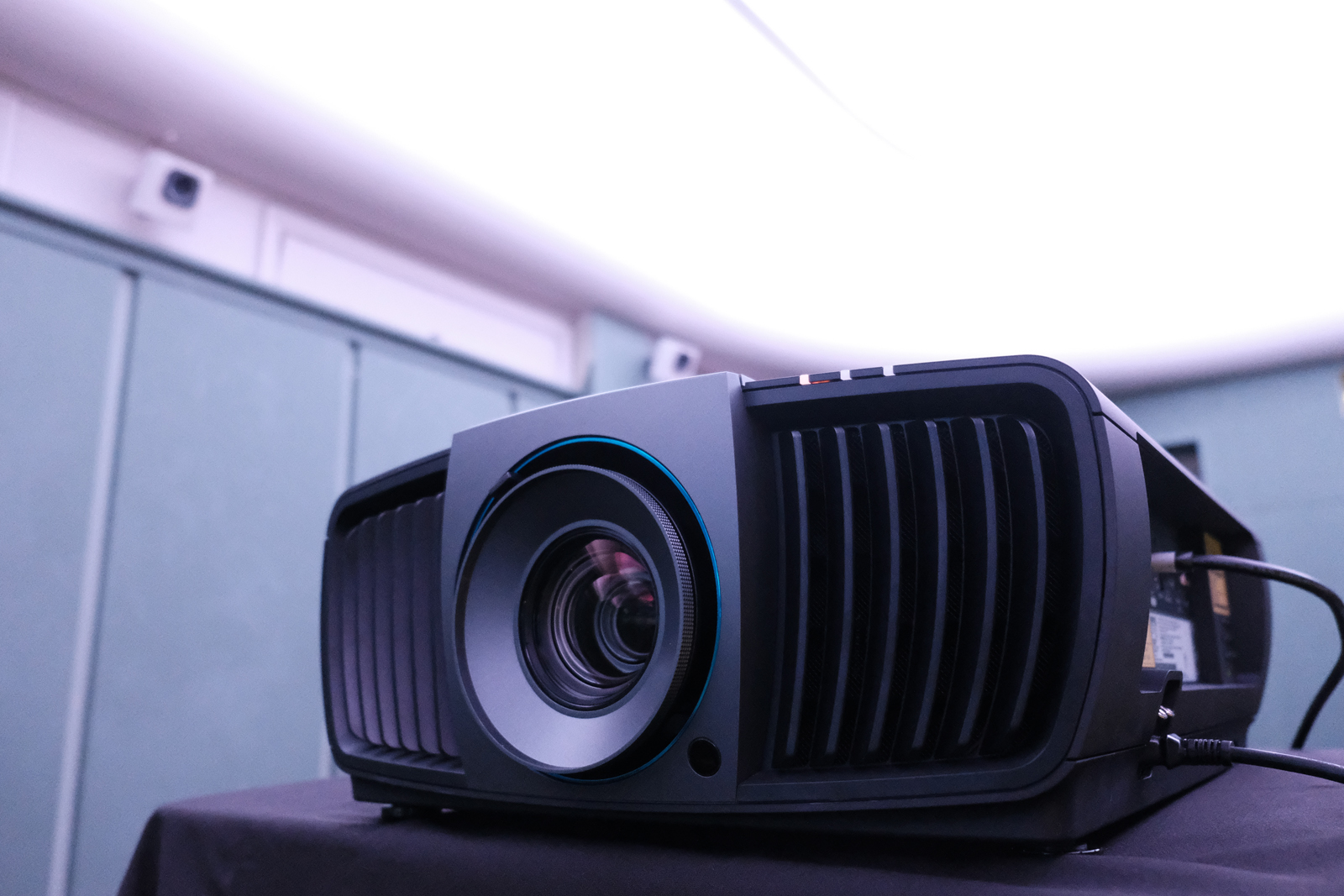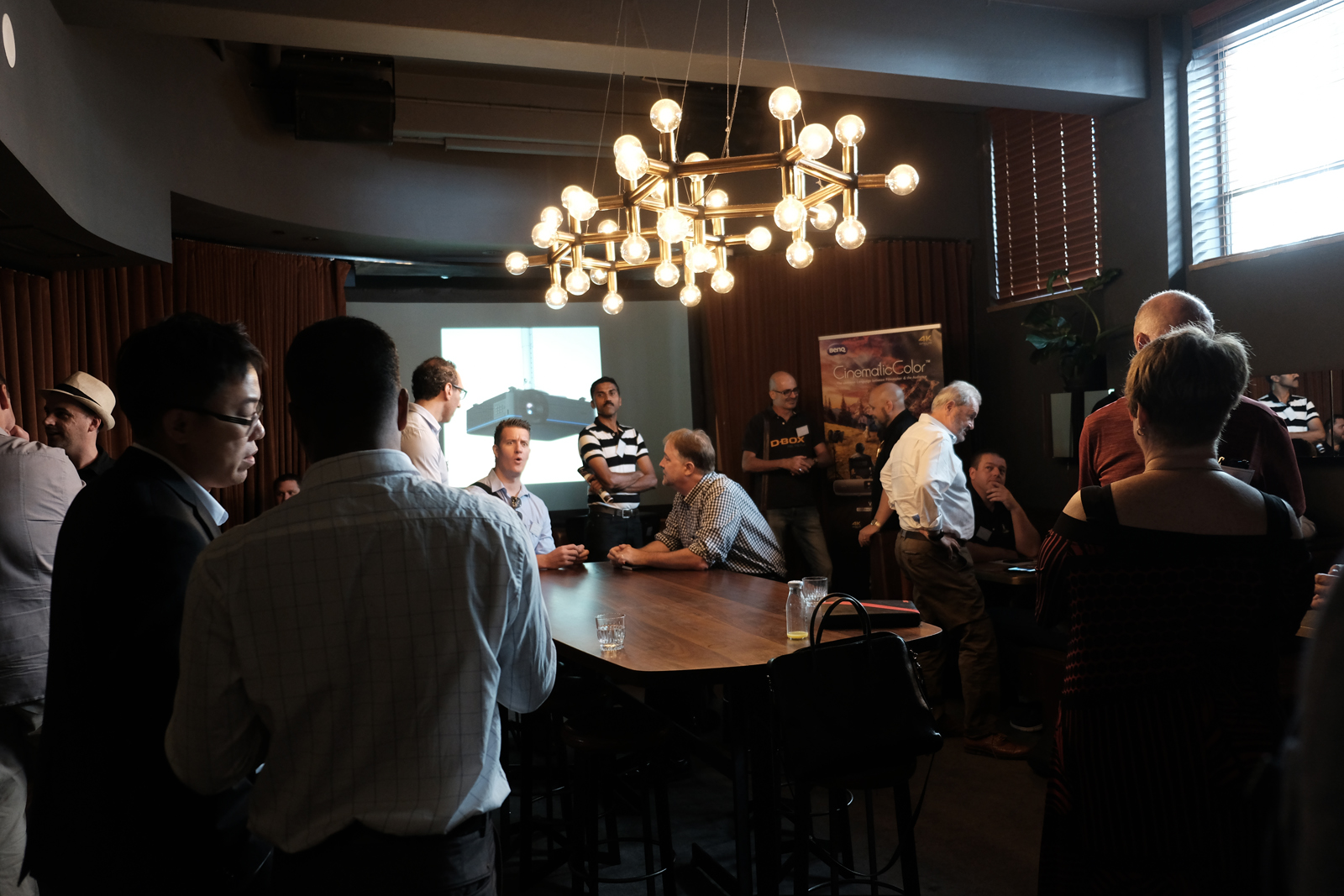BenQ W2700 & W5700 4K UHD Projectors First Impressions

When a manufacturer pulls out all the stops for a product launch, you know they think they’re onto something pretty special. BenQ's Sydney launch of its newest 4K projectors, the W2700 and W5700, was no exception.
Held at the Golden Age Cinema & Bar in North Sydney, BenQ chose a fitting and somewhat lavish site for the launch. As the name implies, the venue was indeed reminiscent of the golden age of cinema, complete with a bar and art deco stylings.

Likewise, no expense was spared with the guest list, with notables including Jeffrey Liang (President BenQ APAC Region), Martin Moelle (Vice President BenQ Asia Pacific) and Ian Cope of Rising Sun Pictures.
So where does Ian Cope and Rising Sun Pictures fit in the BENQ picture? Ian is the VFX bidding producer for Rising Sun Pictures in Adelaide. If you haven't heard of Rising Sun Pictures, for over 24 years they've created the visual effects for an extensive range of A-List titles, including Tomb Raider, Thor Ragnarok, Logan, The Hunger Games: Mockingjay Part 1, Harry Potter: The Half-Blood Prince, Logan and The Wolverine.
Ian’s presentation included a breakdown of how the “Quicksilver Kitchen Scene” in X-Men: Days of Future Past was created.
All of this leads to what Ian, and indeed the film industry as a whole, regard as one of the most essential aspects in appreciating all of the visual glory that film has to offer: accurate colour reproduction.
Ian explained, to see the filmmakers intention in the way it was envisioned, requires the viewing device (television or projector) to reproduce colour accurately. In the case of 4K, that means as accurate as possible reproduction of the Ultra HD DCI-P3 colour space. For Blu-ray and HD it’s accurately reproducing the Rec. 709 colour space.

Indeed, this was the mantra for the day, with both Jeffrey and Martin both echoing Ian’s sentiments and explaining how seriously BenQ takes accurate colour reproduction. It’s also the basis on which BenQ’s latest W2700 and W5700 projectors have been built around.
Every one of these projectors is hand calibrated in BenQ’s Taiwan production facilities to exacting tolerances. To be more specific, this requires that the projector in question accurately produces a D65 white point and have a colour error less than 3 Delta E (anything below 3 Delta E is not visible).
Building on this, the $2,499 W2700 can reproduce 100% of the Rec. 709 HD/Blu-ray colour gamut and 95% of the DCI/P3 colour gamut used in 4K UHD and commercial cinema.
Stepping up to the W5700 brings both 100% of Rec. 709 and DCI/P3 colour gamuts. At $3,999, the W5700 is to the best of my knowledge, the cheapest projector on the market that can reproduce full DCI-P3 colour.

This is indeed what we experienced when viewing scenes from The Greatest Showman courtesy of both the W2700 and W5700 in the Golden Age’s cinema room. It was evident that both projectors were capable of producing a greater range of colour than the more commonly used Rec. 709 colour gamut.
Likewise, viewing material in black and white also suggested good greyscale tracking, sentiments that were also mirrored by Rising Sun’s Ian Cope.
Both the W2700 and W5700 produced sharp images due to their all-glass 4K optimised lens array. This was also because they are single-chip DLP projectors which don’t require panel alignment.
While single-chip DLP’s are capable of sharper images, the potential downside is ‘rainbow effect’ which can be highly distracting if you’re susceptible to it. I didn’t see any rainbowing; however, I’m not prone it, so I encourage you to make your own observations.

In typical BenQ fashion, both projectors produced a high level of light output producing very watchable images even with the room's lights turned on.
This provides a compelling case to use either the W2700 or W5700 in rooms lacking complete light control. It could also potentially mean either could be used in areas not traditionally associated with front projection.
Indeed this is precisely what the W2700 has been designed around, with its white chassis and small foot-print. Whereas, the matt black chassis of the W5700 has been designed more for dedicated cinema rooms.

If either projector has an Achilles heel, it would have to be their black levels. While stepping up to the more expensive W5700 did demonstrate visibly better black levels, neither is going to producing inky blacks.
The big takeaway from this (particularly in the case of the W2700) is that both these projectors are more budget-friendly offerings and they bring other significant benefits to the table, particularly in terms of colour reproduction.

We were only able to observe the W2700 and W5700 for a limited amount of time and without the benefit of any calibration equipment. With this in mind, I’m keen to do some further testing with both projectors to see just how accurate these projectors are and to see if my own observations were indeed correct!
To this effect, we will be visiting Ian at Rising Sun Pictures shortly to do a full calibration of the W2700 that they’re using in their own review room. Oh, and of course, we’ll be reporting the results back here!
For more information visit BenQ.
Tony O'Brien
As the owner of Clarity Audio & Video Calibration, Tony is a certified ISF Calibrator with over a decade of experience. Tony is an accomplished Audio-Visual reviewer specialising in theatre and visual products for over a decade at StereoNET.
Posted in: Home Theatre | Visual
JOIN IN THE DISCUSSION
Want to share your opinion or get advice from other enthusiasts? Then head into the Message
Forums where thousands of other enthusiasts are communicating on a daily basis.
CLICK HERE FOR FREE MEMBERSHIP
Trending
applause awards
Each time StereoNET reviews a product, it is considered for an Applause Award. Winning one marks it out as a design of great quality and distinction – a special product in its class, on the grounds of either performance, value for money, or usually both.
Applause Awards are personally issued by StereoNET’s global Editor-in-Chief, David Price – who has over three decades of experience reviewing hi-fi products at the highest level – after consulting with our senior editorial team. They are not automatically given with all reviews, nor can manufacturers purchase them.
The StereoNET editorial team includes some of the world’s most experienced and respected hi-fi journalists with a vast wealth of knowledge. Some have edited popular English language hi-fi magazines, and others have been senior contributors to famous audio journals stretching back to the late 1970s. And we also employ professional IT and home theatre specialists who work at the cutting edge of today’s technology.
We believe that no other online hi-fi and home cinema resource offers such expert knowledge, so when StereoNET gives an Applause Award, it is a trustworthy hallmark of quality. Receiving such an award is the prerequisite to becoming eligible for our annual Product of the Year awards, awarded only to the finest designs in their respective categories. Buyers of hi-fi, home cinema, and headphones can be sure that a StereoNET Applause Award winner is worthy of your most serious attention.













































